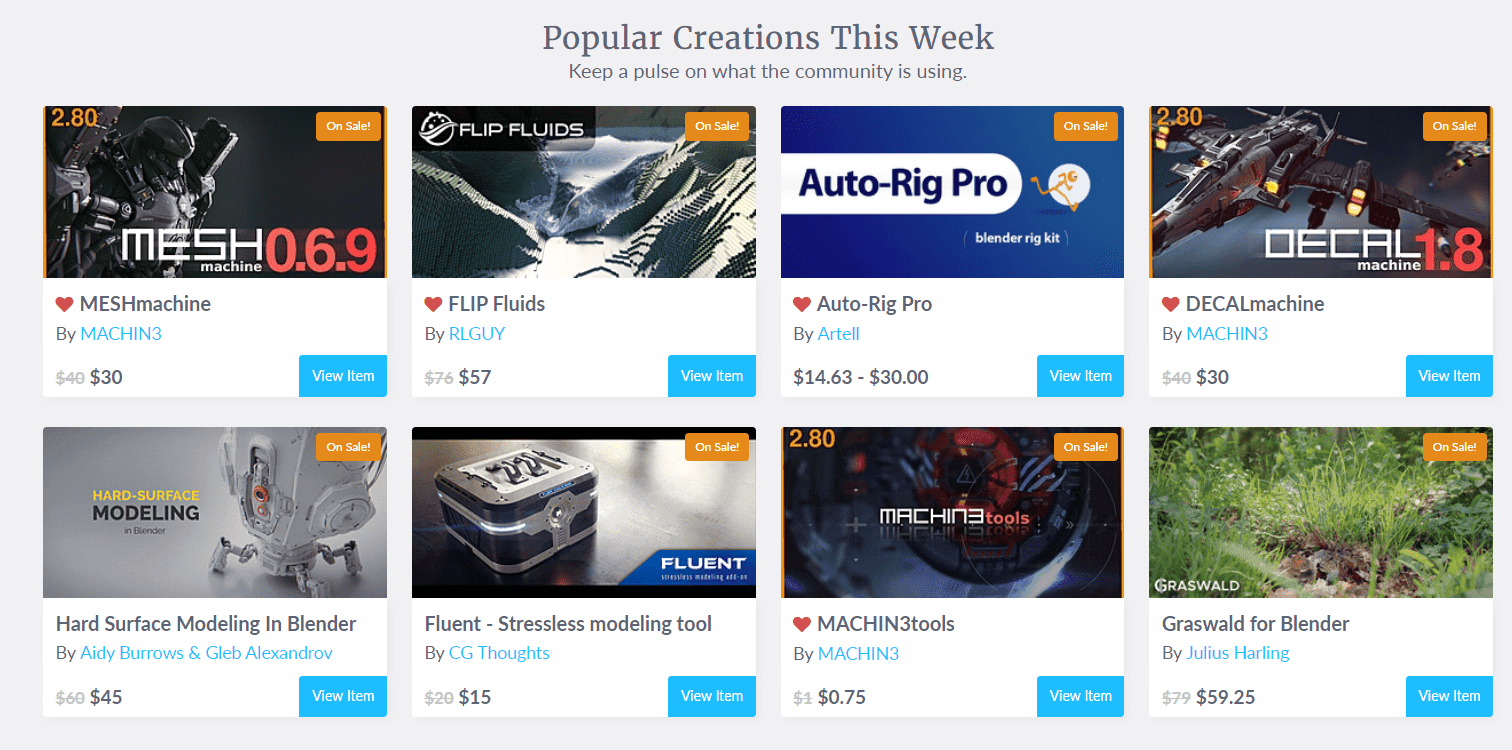
We interviewed Jonathan Williamson (the founder of Blender Market) to find out how you can make you can make money from selling your 3D assets on Blender Market.
Jonathan, why does the Blender Market exist?
The Blender Market exists because I grew weary of add-ons and other Blender resources constantly falling into disrepair due to the inability for the developer(s) to constantly maintain free add-ons. So often add-ons would be created out of a personal need and then shared with the rest of the community for free, which was great! The problem was inevitably the creator would run out of time or interest to maintain the add-on and thus it'd frequently break with the next Blender release. I saw this in my own early add-ons.
By selling an add-on, or any other Blender product, the creator has more motivation and a stronger sense of duty to maintain the functionality for their customers.
Beyond that, though, the Blender Market also exists because I believe in the ability of simple capitalism, paired with social responsibility, to raise a persons quality of life and to give back to the community.
Why should artists sell and buy tools on Blender Market?
One of the most difficult parts of starting out, in any business, is growing an audience. As the largest marketplace dedicated solely to Blender the Blender Market brings huge audience to your doorstep, all you have to do is embrace it and work hard to create compelling products that people need.
Blender is an open-source, free software. Yet, Blender Market is based on creators charging money for Blender tools. Isn't that a contradiction of sorts?
Not at all. This is a common misconception around free and open source tools. There is no conflict between commercial products and the freedom that open source brings. Being open sources ensures that Blender will always be free to use, adapt, and modify for any purpose, including the selling of tools and services that are built on that same open source code.
It's worth remembering too, that selling a product is about far more than the code or the models or the textures that are included in the product. Selling a product is about creating value for your customer. In order to create that value you are not only building a product but you're also making a commitment to the customer to maintain it and to offer support in the use of that product.
When you started Blender Market 4 years ago, it had very little competition. Today, there are other online marketplaces for 3D models and add-ons: what makes Blender Market different?
What sets the Blender Market apart is in the very name: Blender. Our sole focus is providing a marketplace for the Blender community to build their businesses on.
The Blender community is a tight-knit group. We believe strongly in creating a platform that not only enables Creators to support themselves but also one that encourages contributing back to Blender and the community as a whole.

Can Blender Market become a viable source of income for students selling their Blender tools?
Absolutely! The advantage to the Blender Market is it comes pre-primed with a ready and willing audience. One of the hardest parts of starting a business, or selling a side project, is finding an audience that needs what you're selling. The audience almost always exists but connecting with them is difficult. This is where the Blender Market comes in.
While they're not students, I would point to Mark Kingsnorth, Ryan Guy, and Dennis Fassbaender as examples. These guys launched products on the Blender Market with no significant prior exposure and now are frequently top-selling Creators month to month.
We spoke with Ryan and Dennis here: https://blendermarket.com/posts/flip-fluids-creators-blender-is-becoming-incredibly-powerful
And you can read our conversation with Mark here: https://blendermarket.com/posts/interview-mark-kingsnorth
For students that are just starting out it's also worth reading How to Make Money With Blender.
What are some of the most popular products on the Market?
The top three products, by sales volume, are the Hard Surface Modeling course by Aidy Burrows and Gleb Alexandrov, The Grass Essentials by Blender Guru, and RetopoFlow by CG Cookie.
Each of these products address a serious need for many artists, such as teaching techniques for modeling complicated forms, quickly generating realistic vegetation for architecture, and speeding up the retopology process.
These types of products tend to do well not only because they solve major problems for customers but also because the Creators have invested serious amounts of time and energy into making them compelling products.
What is your advice for students wanting to become successful as Blender creators?
Ask a lot of questions and listen closely. Take every opportunity you can to learn from those around you. There are no stupid questions when it comes to learning but the value of listening closely to what others are saying and doing also cannot be overstated.
You don't need to prove anything when you're starting out. Listen attentively, ask questions when you don't know, admit to yourself and others what you don't know, and embrace the unknown.

Where do you see Blender headed in the future?
I see Blender continuing to make inroads to established industries in addition to making an impression on newly emerging industries.
One of the advantages Blender has, and will continue to have, is that it's the single most widely used 3D animation software in the world. This means there's a whole generation of students and young professionals out there that are only now starting to make their voices heard; many of whom learned on Blender.
I would gladly take a bet on most small studios and professionals being largely Blender based in the next few years. It is these small studios that represent the bulk of the jobs and creative work available to up and coming artists.
